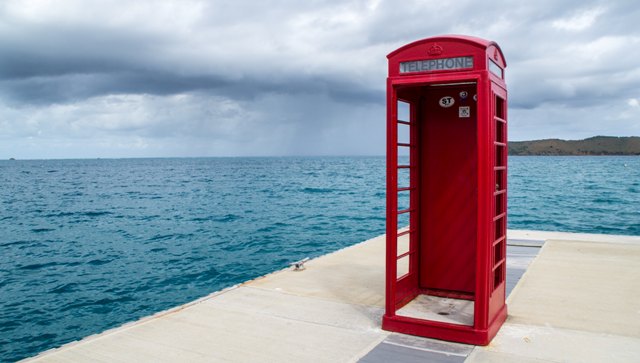Phone: (301) 352-5738
Email: info@CoastalClimateControl.com
Office | Warehouse:
1598 Whitehall Road, Suite D
Annapolis, Maryland 21409
Phony Facts

We were the first house on our street to get a telephone when I was a lad in England. We didn’t pay for the installation though, that was arranged by the hospital where my mother was something important in the operating theaters, and she was often called out for emergencies. I guess they got tired of sending taxis and having the poor drivers going bonkers trying to wake our sleeping household.
Ours was a line that we shared with another unknown party, and I soon learned that if the phone tinkled when you walked past, you could carefully put your hand over the microphone and lift the receiver and hear the other parties’ conversation. We never knew who the others were, and their conversations were quite unexciting and boring, so it was more like eavesdripping than eavesdropping. I heard tales that in the US there were sometimes up to ten households on one party line, which I imagined to be far more interesting.
Our first phone had no dial. You had to pick up the receiver and wait for an operator to come on the line and say “number please”. Our number was 1968, which was quite a novelty when the year 1968 rolled around.
For those without the luxury of a phone at home there were the ubiquitous British red phone boxes, where you needed four pennies for a local call, and maybe sixpences or shillings for long distance connections. The operator knew what coin you had put in the slot, because each slot had a different type of bell that the coin would hit on its way down to the money box, and there was a microphone hidden down there in the machinery. One was a ding, one a clang, and one a boing. Most ingenious, I thought. Of course, some unscrupulous characters tried to reproduce the sounds in little machines that they’d smuggle into the phone box in order to try and fool the operator and get free calls, but the operators usually spoiled their games.
For local calls you first had to put in four pennies, and when the other party answered you pushed button A and you could speak to them. If there was no reply you pushed button B and your pennies were dispensed into a scoop for you to recover. It was the same for long distance calls, but with higher denomination coins. Back then, no lad worth his salt would pass a telephone box without opening the door and pushing button B to see if some klutz had forgotten to retrieve their money.
Finally, technology caught up with us and our phone was upgraded to one with a dial. We were then 21968, the town had an area code, and we were in control of our own destiny. No more “number please”. I must have been really intrigued at this new technology, as later on I would find myself working for the national phone company, and did so for many years until I discovered that messing around on boats was a more enjoyable way to spend my time.
The function of the dial was to open and close the circuit on the two wires that snaked all the way from the local telephone exchange to each phone in the area. Dial 5 for example, and there would be 5 make-and-break pulses sent down the wires, and those pulses activated an electro-mechanical switch in the exchange to move to level 5. Then another switch connected to level 5 reacted to the next number dialed, and so on until the connection was made through the exchange to the intended recipient’s number … or to some other number.
This was often the case due to dodgy joints or connections in the wires that gave phantom make-and-break signals, and the switches in the exchange would react to those just as well as to genuine dial pulses. That’s why the emergency number is 999 (UK) or 911 (US). 111 would have been much quicker to dial, but would have resulted in an enormous amount of false emergency calls, especially on windy days in areas where cables were strung between poles.
Those two wires to each phone carried 50v direct current (DC) that originated from converters at the exchange connected to the mains, and this was then floated across a bank of flooded lead-acid cells that made up a 50v battery. This resulted in a smooth and stable DC voltage and also provided some stand-by power for when the grid power went out and before the emergency generator kicked in.
 The signal that made the bell in the telephone ring to herald an incoming call didn’t suffer such voltage loss as it was an alternating current (AC) signal. As a lowly apprentice I was often warned to be careful when putting ones head between the open copper wires at the top of telephone poles, as you could get quite a zing between the ears if there was ringing current around. I did indeed experience this once, but hung on tight and lived to tell the tale. I’m sure those that now call me Yoda do so not for my intellect and wisdom, but for my oversized wing-nut ears that tend to attract danger, as they did on that day.
The signal that made the bell in the telephone ring to herald an incoming call didn’t suffer such voltage loss as it was an alternating current (AC) signal. As a lowly apprentice I was often warned to be careful when putting ones head between the open copper wires at the top of telephone poles, as you could get quite a zing between the ears if there was ringing current around. I did indeed experience this once, but hung on tight and lived to tell the tale. I’m sure those that now call me Yoda do so not for my intellect and wisdom, but for my oversized wing-nut ears that tend to attract danger, as they did on that day.
Any marine electrician or savvy boat operator knows that the longer and thinner the wire, the higher the DC voltage loss between one end and the other, so phones located furthest from the exchange suffered the greatest volt-drop, and often would have barely enough voltage to operate properly. One way to overcome the voltage loss issue would have been to simply raise the supply voltage at the source above 50v. But raising DC voltage any higher than 50v puts it into the danger category according to the powers that be, and we wouldn’t want pets and babies getting potentially lethal shocks from chewing through wiring and munching on telephones, now would we?
The same applies to boat wiring. As far as I know there is no dedicated marine equipment or standards or guidelines pertaining to DC voltages higher than 48v (nominal) except for electric propulsion equipment. So now we see vessels with high voltage battery banks of 72v, 96v, and even higher in order to power electric propulsion. Often, the same propulsion power is also available in a unit with a lower voltage requirement, but then the current draw, wiring size, etc., is magnified accordingly, adding cost, weight, and bulk to the installation.
Solar installations on boats can also carry dangerously high DC voltages, especially when large solar panels are used where a single panel can produce 65v DC or more, although with low potential maximum current. Wiring several panels in series to one controller is not normally recommended due to potential shading issues, but when configured this way can easily result in DC voltages of upwards to 150v or more.
In the damp/wet environment common to marine installations, one ponders the results of having a grown adult gnawing their way through solar or propulsion cables carrying high voltage DC, or at least accidentally cutting them or having them chafe through to the conductors.
Fings ain’t wot they used to be, they say. How true of both telephones and marine DC systems.
By accepting you will be accessing a service provided by a third-party external to https://coastalclimatecontrol.com/






